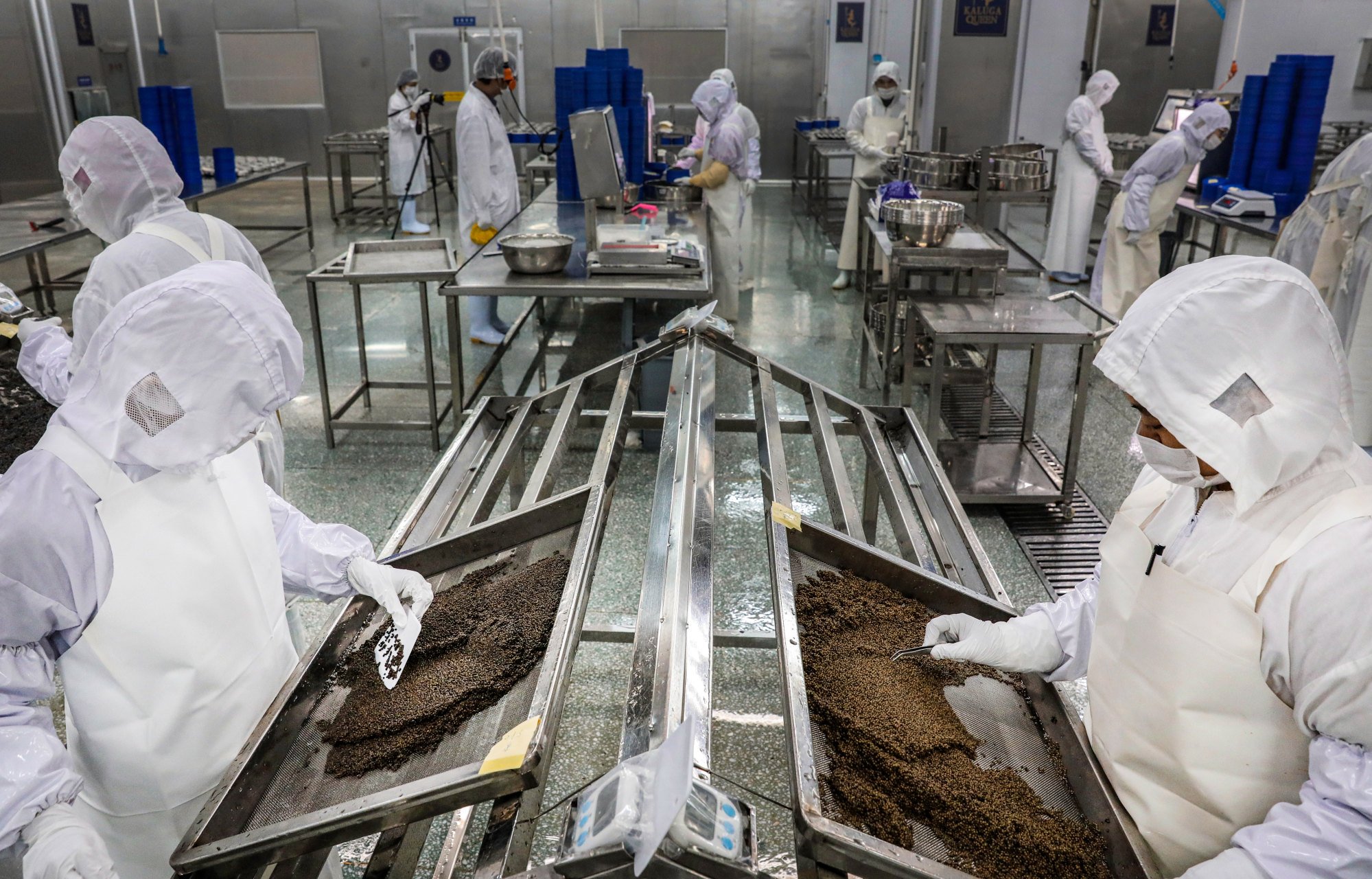Chinese caviar is increasingly finding its way to dining tables worldwide due to improved quality and an efficient cold-chain delivery system, making the country the world’s biggest exporter of caviar despite US tariffs.
Data from the International Trade Centre (ITC) shows China exported 276 tonnes of caviar to the global market in 2023, up 3 per cent from a year prior and nearly twice as much as in 2019, when 140 tonnes were exported.
With a unit price of nearly US$300 per kilo, up 4 per cent year on year, Chinese caviar exports generated US$82.7 million in 2023, accounting for about 40 per cent of the global market share.
“At first, our caviar faced concerns from foreign customers due to past perceptions of affordability over quality in Chinese food products,” said Wang Bin, president of caviar juggernaut Hangzhou Qiandaohu Xunlong Sci-Tech, which sells the popular Kaluga Queen brand.
“However, with superior quality, competitive pricing, and exceptional customer service, Chinese caviar has been capturing a larger share of the global market in recent years.”

By total production, China now accounts for more than 50 per cent of the world’s annual production, Wang said. Major buyers include the US and EU countries.
In 2018, as the trade war between the US and China intensified, Washington imposed a 25 per cent additional tariff on a range of Chinese goods, including caviar. This raised the total tariff from 15 per cent to 40 per cent on Chinese caviar to the world’s biggest caviar importer.
As a result, the “landed duty paid” price of Chinese caviar increased by about 30 per cent to US$293 per kilo in 2019, according to data from the US government.
But contrary to initial concern that additional tariffs might hinder its caviar exports, China remains the most important source of US caviar imports. In 2023, 60 per cent of imported caviar in the US came from China, according to official trade data.
While caviar’s long-held luxury status keeps it off most plates, for its targeted consumers, quality reigns supreme, said Wang. Price fluctuations matter less as long as the flavour remains exquisite. He said that technological breakthroughs have allowed his company to breed unique sturgeons that yield large, flavorful roe with faster maturation, boosting the quality and productivity.
Despite the increase, Chinese caviar maintains its price advantages compared with historically renowned producers such as Iran and France. In 2023, caviar exported from Iran cost more than US$2,000 per kilo, more than six times that from China. French caviar, at about US$700 per kilo, was also more than double the price of China’s, according to the ITC.
I believe caviar will eventually gain popularity in China, too
Shawn Wang, CMO at Tendata, a Shanghai-based provider of global trade data, said China’s technological advancements in storing and transporting caviar have made it more cost-effective.
“The strong cold-chain logistics system gives China a significant edge in the global market,” he said. “This means that companies can consistently transport temperature-sensitive goods all the way from farms and factories to processing plants and finally to international customers at a relatively lower cost compared with companies in developed countries.”
But while caviar is popular in the global market, it remains relatively niche in China, he added, noting how it can take time to acquire a taste for the delicacy.
Wang Bin agreed, pointing out how only 20 per cent of his company’s caviar sales are from the domestic market.
“But China has shown a strong openness to foreign cuisine as is now a major market for many Western foods,” Wang Bin said. “I believe caviar will eventually gain popularity in China, too.
“What’s more, in case of any more trade barriers in the future, increasing domestic sales would help mitigate the impact.”


